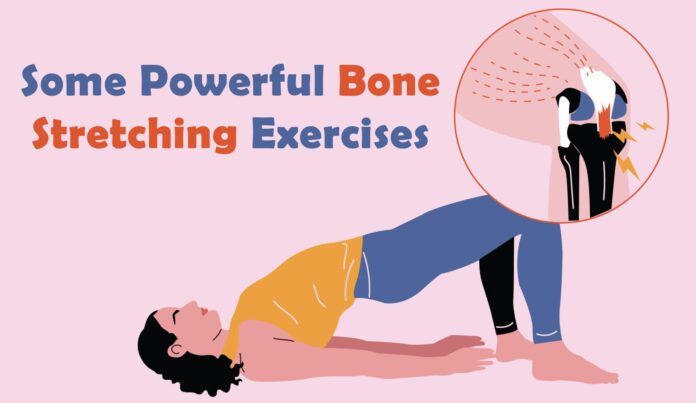Most people are familiar with several of the benefits of exercise, such as developing muscle strength and endurance, reducing the risk for heart disease and stroke, and preventing obesity.
Maybe not as well understood is the importance of daily physical activity in building and keeping healthy bones. Inactivity causes loss of bone! Exercise is excellent for more than just your lungs, heart, and muscles. Physical activity is one of the easiest ways to keep your bones health, whether you’re young or old.
Bones are living organs, orthopedics, and sports medication doctor at Medical City Las Colinas in Irving, Texas. During your early to mid-20s, your bones accumulate a transfer of calcium. However, once you hit your 40s, bone mass decreases. If your body requires calcium and doesn’t get sufficient from your diet, your body will take it from the bones.
Other factors that can weaken bones further include immobility (such as having a limb in a cast), physical inactivity, and osteoporosis, Teeter says. To combat all three, you require to exercising.
Why exercise?
Like a muscle, bone is living tissue that response to exercise by becoming more assertive. Young women and men who exercise daily achieve higher peak bone mass (maximum bone density and strength) than those who don’t, for most individuals, bone muscle peaks during the third decade of life. After that time, we can lose bone. Women and men older than age 20 can help inhibit bone loss with daily exercise.
Exercising can also help us maintain coordination, muscle strength, and balance, preventing falls and related fractures. It is essential for older adults and people who have been diagnosed with osteoporosis.
The connecting science exercise to intimate libido is limited and often got from either low-powered laboratory studies involving mostly women or unscientific detailed surveys conducted by exercise magazines and sporting-goods companies. Some common trends support the idea that exercise can boost libido and reproductive health in men and women. Fildena 100mg and Super P Force is best remedy to improve heart health, high blood pressure and other men’s health problems.
Why exercise matters for bone health
Prevention is the best medicine for strong bones. Regular exercise works to strengthen bone mass and density and the thickness of bones, and it also helps aid in the decrease of bone loss.
Our bones are a living mass, and like muscles, they need stress to stimulate growth and maintenance. Therefore, exercise is so important. Keeping up with a good exercise program is also beneficial, so as we get older, it helps balance and coordinate to prevent falls that may cause fractured bones.
The best bone-building exercises
Weight-bearing and resistance exercises are the most beneficial for your bones. Weight-bearing exercises force you to work against pressure. It includes walking, jogging, hiking, playing tennis, climbing stairs and dancing. Endurance exercises, such as lifting weights, can also strengthen bones. Other exercises such as bicycling and swimming can help build and control powerful muscles and have excellent cardiovascular health benefits, but it is not the best way to exercise your bones.
What type of Exercise Is Best for Your Bone Health?
The best kind is something you enjoy and will do regularly. But with osteoporosis, certain forms of movement are beneficial. These include:
Weight-bearing aerobic exercise.
Like walking or climbing stairs, these workouts make your bones work harder than regular movements to support your body weight. That work assists strengthen them and slow bone loss.
Some weight-bearing workouts, like jogging, playing tennis, and hiking, put more stress on your bones and joints than other types. Experts call them high-affected exercises. If you’ve already had a fracture because of osteoporosis or you’re at risk for one, you may need to avoid these high-affected workouts.
Other aerobic exercises, like swimming, water aerobics, elliptical machine, and biking, aren’t effective at strengthening bones. Still, they are great low-affected options for people who can’t do a high-affected, weight-bearing activity.
Strength training (aka resistance training).
You use weights, resistance bands, or your body weight to strengthen your muscles. That’s important because powerful muscles — especially near your spine — can help protect your bones. But strength/weight training also puts pressure on your bones. That aids build and maintain bone mass.
It’s a wonderful idea to ask a physical therapist or certified individual trainer to help you create a strength training workout that’s safe and tailored to your needs. Some experts may help you through video calls if you don’t want to go into a gym or physical therapy office.
It is Flexibility, stability, & balance exercises.
Though they don’t keeps bone mass the same method that weight-bearing aerobic exercise and strength training do, moves that enhance your range of motion and balance can lower your risk of falling. Falls are one of the significant ways that people with osteoporosis break their bones. If you’re flexible and have a good balance, you’ll also have an easier time getting around and exercising, which can help you stay mobile longer.
Also, several of these exercises can enhance your posture, helping defend your spine. Also, Yoga is best exercise to improve physical health. Fildena 50 and Vigora 100 are the pills to treat erectile dysfunction problems in many men.
Here, is Flexibility, stability, and balance exercises include:
- Yoga
- Tai chi
- Stretching
- Pilates
Simple Exercises, like standing on one leg or performing heel dips
Necessary: Before you do yoga or Pilates, ask your doctor or a physical therapist which exercises you should avoid. Specific motions, such as bending forward, may not be safe for individuals with osteoporosis or those who are more likely to break a bone. It may increase your risk of a spine fracture.








